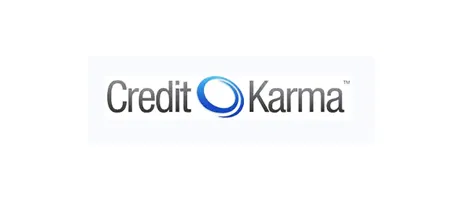Public and Private Blockchain Concepts and Examples

There’s been tremendous interest in blockchain. FYI, blockchain is the technology on which Bitcoin functions. Mr. Nakamoto developed blockchain as an acceptable solution to the game theory puzzle—Byzantine General’s Problem. This led to many companies adopting the technology in different ways to solve real-world issues, wherever there was an element of trust involved. The majority of them could be relating to the ability to provide proof of ownership—for documents, software modules/licenses, voting, etc.
We do a lot of research to understand other use cases of blockchain apart from Bitcoin-based payments. Recently we had released a comprehensive analysis of 50+ startups and 20 use-cases of blockchain. Though there has been news of large companies accepting bitcoin (Ex.: Amazon, Microsoft, Dell) and the overall acceptance reaching a 100,000+ merchants figure, upon deeper examination, we realize that large corporations do not store the Bitcoin payments. They generally partner with a Bitcoin payment processor who converts the Bitcoins to cash as and when they receive payment. This converted amount is what the corporates take into their account. What a bummer!
By definition, blockchain is a ledger of all transactions that have been executed. It could be seen as a write-only platform, wherein transactions, once executed, cannot be modified later. This platform has been further divided into Public and Private blockchain. Is there a third one? A hybrid mode such as a ‘Consortium blockchain’ as represented by Vitalik Buterin, founder of Ethereum, a decentralized web 3.0 publishing platform.
Public Blockchain
A public blockchain is a platform where anyone on the platform would be able to read or write to the platform, provided they can show the proof of work for the same. There has been a lot of activity in this space as the number of potential users that any technology in this space could generate is high. Also, a public blockchain is considered to be a fully decentralized blockchain. Some of the examples are:
Ethereum, a provider of decentralized platforms and programming language that helps running smart contracts and allows developers to publish distributed applications. Factom, a provider of records management, records business processes for businesses and governments. Blockstream, a provider of sidechain technology, focused on extending the capabilities of Bitcoin. The company has started experimenting with providing accounting (considered a function to be done on a private blockchain) using public blockchain technology.
Private Blockchain
On the other hand, a private blockchain provides only the owner with the rights to any changes that have to be done. This could be seen as a similar version to the existing infrastructure wherein the owner (a centralized authority) would have the power to change the rules, revert transactions, etc., based on the need. This could be a concept with tremendous interest from FI’s and large companies. It could find use cases to build proprietary systems and reduce the costs while increasing their efficiency. Some of the examples could be:
Eris Industries aims to be the provider of shared software databases using blockchain technology. Blockstack aims to provide financial institutions back-office operations, including clearing & settlement on a private blockchain. Multichain, a provider of an open-source distributed database for financial transactions. Chain Inc., a provider of blockchain API. Chain partnered with Nasdaq OMX Group Inc. to provide a platform that enables trading private company shares with the blockchain.
Let's explore if there is a hybrid blockchain concept (third type). A consortium blockchain would be a mix of both the public and private. Wherein the ability to read & write could be extended to a certain number of people/nodes. This could be used by groups of organizations/firms who collaborate and develop different models. Hence, they could gain a blockchain with restricted access, work on their solutions and maintain the intellectual property rights within the consortium.
Let's look at it in terms of startups/companies. Last month we created an infographic that captures the blockchain concept and analysis in great detail.

From our analysis, we believe these could be some of the public blockchain companies in the above infographic: Augur, Storj, Colu, Assembly, Blocktech, La’Zooz, Filament, BitnPlay, PlayCoin, Fundrs.org, Blockai, MyPowers, Asimov, BitProof, FollowMyVote, OneName, ArtPlus, The World Table.
Private blockchain as a concept is still in its nascent stage, and the number of firms working on this concept is expected to grow multi-fold in the next two years.
To learn about Prove’s identity solutions and how to accelerate revenue while mitigating fraud, schedule a demo today.

Keep reading
 Read the article: The Death of the OTP: Why Legacy MFA is Failing the Modern Consumer
Read the article: The Death of the OTP: Why Legacy MFA is Failing the Modern ConsumerDiscover why legacy MFA is failing and how Prove Unified Authentication provides a smarter, frictionless alternative. Learn how to replace insecure SMS OTPs with continuous, multi-layered identity assurance that prevents fraud while boosting conversion rates.
 Read the article: Prove Launches ProveX℠, the Internet’s First Digital Trust Exchange
Read the article: Prove Launches ProveX℠, the Internet’s First Digital Trust ExchangeProve launches ProveX, ProveX, a new digital trust exchange that enables enterprises to instantly access verified data and credentials from partners, while preserving trust through every interaction
 Read the article: Beyond the OTP: Why SMS-Based 2FA Is Failing and What Comes Next
Read the article: Beyond the OTP: Why SMS-Based 2FA Is Failing and What Comes NextExplore the classic conflict between security measures and user friction.













